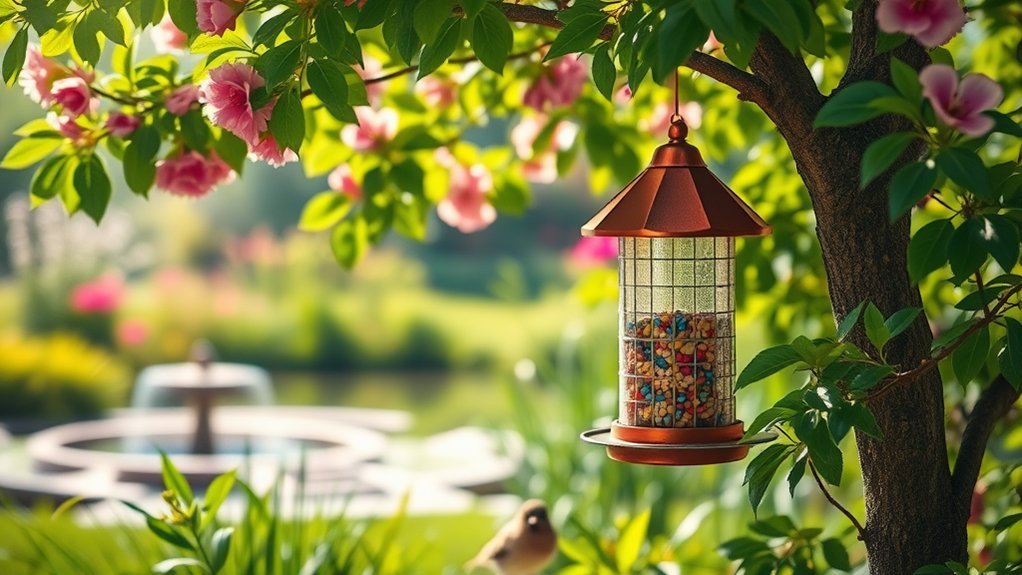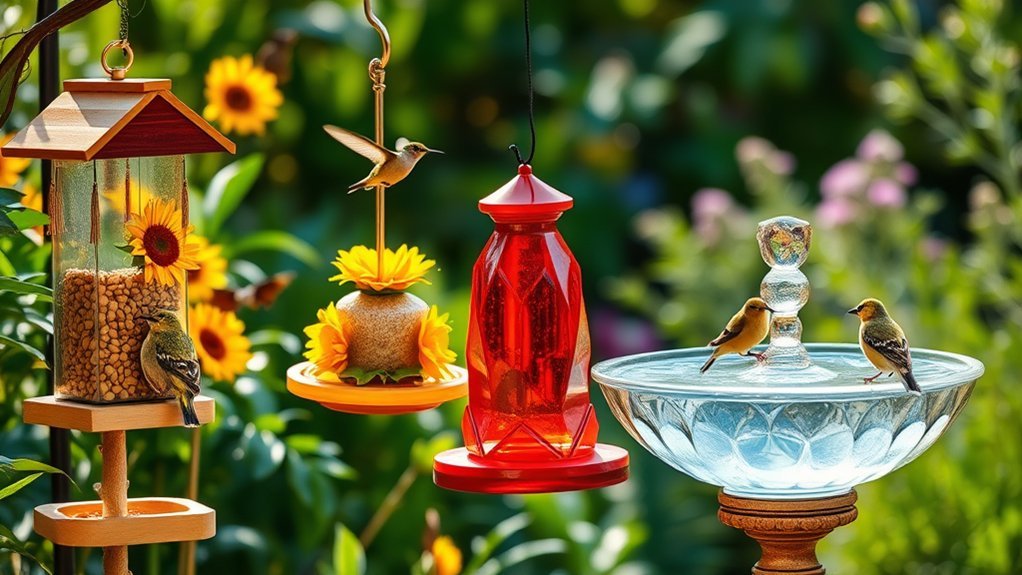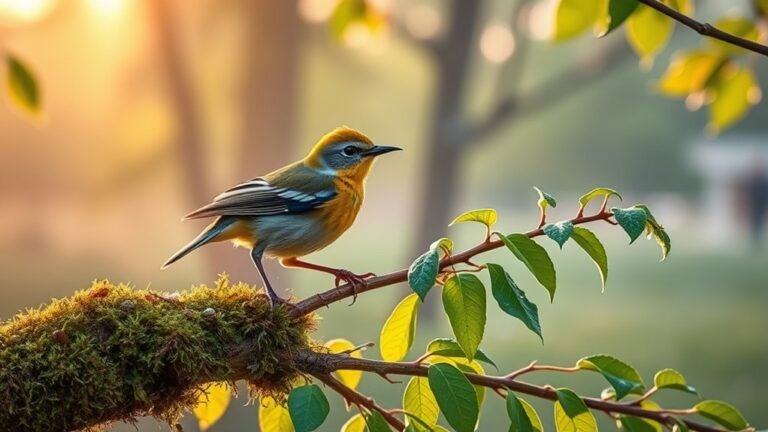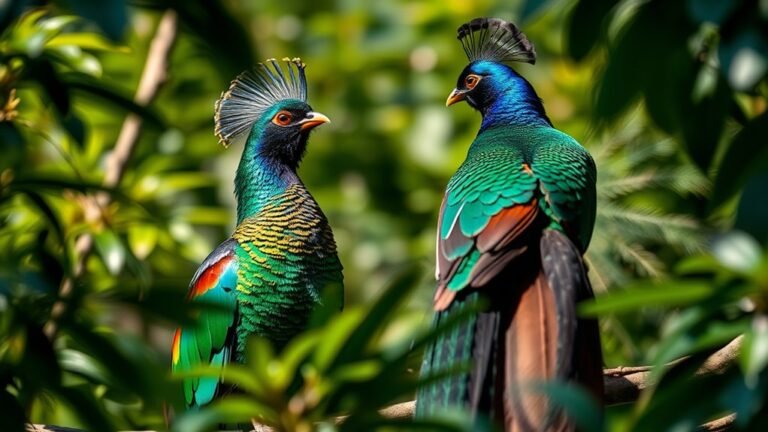10 Expert Tips to Attract Birds to New Feeders
To attract birds to new feeders, understand their preferences and behaviors. Different bird species have unique feeding habits. This means the type of feeder and the food you choose are important. The location of the feeder, its cleanliness, and nearby natural resources also matter. By optimizing these elements, you can create a welcoming space for birds.
Here are some strategies to help attract a variety of birds to your yard:
- Choose the Right Feeder: Select feeders that cater to the species you want to attract. For example, tube feeders work well for finches, while platform feeders attract a wider range of birds.
- Select Quality Food: Use fresh, high-quality birdseed. Popular choices include sunflower seeds, suet, and peanuts.
- Place Feeders Wisely: Position feeders in calm areas, away from predators. Ideal spots are near trees or shrubs, which provide shelter.
- Keep Feeders Clean: Regularly clean feeders to prevent mold and disease. A clean feeder means healthier birds visiting.
- Provide Water: Birds need water for drinking and bathing. Include a birdbath or shallow dish filled with clean water.
- Create a Habitat: Plant native plants and maintain a natural landscape. This offers food and shelter for birds year-round.
- Use Birdhouses: Providing nesting sites can attract birds. Choose birdhouses that suit local species.
- Be Patient: It may take time for birds to discover new feeders. Consistent food supply is key to keeping them coming back.
- Limit Distractions: Minimize loud noises and pets around feeders to make birds feel safe.
- Observe Bird Preferences: Take note of which birds visit and adjust your feeder type and food accordingly.
By applying these strategies, you can create an inviting environment for birds. Enjoy watching them flourish in your yard!
Key Takeaways
- Use different types of feeders like tube and platform feeders to attract various bird species.
- Offer high-quality birdseed, including black oil sunflower seeds and nyjer seeds, to attract more birds.
- Place feeders near trees or bushes for shelter, and keep them five feet off the ground for bird safety.
- Clean feeders regularly, using mild soap every two weeks to avoid mold and bacteria.
- Add native plants and water sources to your yard, creating safe and inviting spots for birds year-round.
Choose the Right Feeder Type

Choosing the right type of bird feeder is important for attracting various bird species to your yard. The shape of the feeder affects accessibility and the types of birds that come to visit.
Tube feeders attract finches, while platform feeders are preferred by larger birds like cardinals. The color of the feeder also matters; bright colors attract certain birds more easily.
Try using different feeder shapes and colors to see what attracts birds in your area. Having a mix of feeder types will help meet different bird preferences and create a welcoming space for them.
You'll enjoy watching the different species that visit your feeders.
Select High-Quality Birdseed
Choosing high-quality birdseed is key to attracting a variety of birds to your feeders. Black oil sunflower seeds are very popular and attract species like cardinals and chickadees. Nyjer seeds are great for attracting finches. Mixed seed blends can attract different kinds of birds.
It's important to ensure the seeds are fresh. Stale seeds can lose their nutrients and appeal to birds. Store your birdseed in airtight containers in a cool, dry place. This practice helps maintain the quality of the seeds and keeps pests away.
Place Feeders in Safe Locations

To attract birds to your feeders, place them in safe locations. Safe placement encourages frequent visits. Here are some tips for choosing ideal spots:
- Position near cover: Place feeders close to bushes or trees. Birds can quickly hide if they feel threatened.
- Avoid direct sunlight: Position feeders in partial shade. This keeps food fresh and helps birds stay cool.
- Elevate feeders: Hang feeders at least five feet off the ground. This distance reduces risks from ground predators.
- Keep away from cats: Choose spots where cats can't reach. This promotes a safer dining experience for birds.
Following these guidelines will help create a welcoming environment for your feathered friends. Happy bird feeding!
Keep Feeders Clean and Well-Maintained
Keeping your bird feeders clean and well-maintained is key to attracting and retaining healthy birds.
Establish a regular cleaning schedule to remove mold and bacteria, ensuring your feeders stay welcoming. Clean the feeders with warm water and mild soap every two weeks, especially after heavy rainfall. Rinse thoroughly and allow them to dry completely before adding fresh seed.
Watch for signs of spoiled seed, such as clumping or a bad smell. Replace any spoiled seed right away.
Provide Fresh Water Sources

Maintaining clean feeders creates a welcoming space for birds and emphasizes the importance of nearby fresh water sources.
Fresh water is crucial for bird health, and the design of your birdbath can significantly impact its use. Here are key design features for your birdbath:
- Shallow Depth: Ensure it's no deeper than 2 inches; birds prefer a shallower option for safety.
- Water Temperature: Use cooler water to attract more birds. Refresh it regularly.
- Placement: Set your birdbath in a quiet and sheltered area for comfort.
- Regular Cleaning: Change the water daily to avoid algae growth.
By implementing these features, you'll attract more birds, creating a lively and enjoyable environment in your yard.
Enjoy the sights and sounds of nature that come with your new avian visitors.
Add Natural Cover and Perches
Creating a bird-friendly environment is simple. Start by adding natural cover and perches in your garden. Use native plants like shrubs or small trees to provide shelter. These plants offer protection from predators and bad weather, making your yard safe for birds.
Place perches near feeders for easy access. This will allow birds to watch their surroundings while they eat. Look for branches that are easy to reach. Birds prefer resting spots with a clear view.
Use Feeder Accessories to Lure Birds
Choosing the right bird feeder is important, but using accessories can help attract more bird species.
Understanding how these accessories work makes feeder maintenance easier and more rewarding for you and the birds.
Here are some helpful accessories to attract birds:
- Seed Trays: These minimize seed waste and draw ground-feeding birds.
- Cages: These protect seeds from larger birds and encourage visits from smaller birds.
- Waterers: A reliable water source brings birds back regularly.
- Squirrel Baffles: These keep squirrels away from seeds, allowing birds to feed without disturbance.
Using these accessories can create a more inviting environment for your feathered visitors.
Enjoy watching them!
Make Your Yard Bird-Friendly Year-Round
To attract birds year-round, consider their needs in each season.
Plant native plants to provide food in the form of seeds and nectar. In spring and summer, choose flowering plants for pollinators and fruiting plants for birds that eat fruit. In fall, keep seed-rich plants to support migrating birds. During winter, plant evergreen shrubs for shelter and set up seed feeders for food.
Add features like perches or water sources to make your yard more inviting.
Creating a bird-friendly space helps support local wildlife. Nurturing this environment will make your yard a welcoming place for both birds and nature lovers.
Monitor and Adjust Feeding Strategies
As you attract birds to your feeders, tracking their preferences can enhance your success.
Pay close attention to bird behavior to identify trends and make necessary adjustments. Here are key strategies to consider:
- Watch which seeds birds prefer and look for patterns over time.
- Switch feeder types depending on the bird species visiting; certain feeders draw specific birds.
- Change food offerings with the seasons, as birds need different foods at different times of year.
- Keep a record of your observations to refine your feeding strategy based on what works best.
This approach will help you create an inviting space for feathered friends while ensuring their needs are met.
Enjoy the process and the joy of birdwatching!
Be Patient and Observant
Attracting birds takes time. If you want to be a good birdwatcher, you need to be patient and observant. Watching bird behavior closely helps you understand their feeding habits.
Take note of the seasonal changes that affect which species come to your feeders. Different birds prefer different seeds or food sources at various times of the year.
Be patient in this process. Instead of getting discouraged by a lack of visitors, keep your feeders filled and watch for signs of interest.
As the seasons change, you'll likely see familiar birds returning. By being patient and observant, you create a safe environment for birds. This not only enhances your birdwatching experience but also deepens your connection to nature.
Enjoy the journey and the beauty of watching birds in your backyard.
Frequently Asked Questions
What Types of Birds Are Attracted to Specific Feeders?
Different bird species prefer specific seeds, and certain feeder designs attract them. For instance, finches enjoy nyjer seeds, and they thrive in tube feeders. Cardinals like sunflower seeds, and they favor platform feeders. Understanding these preferences can improve your birdwatching experience. By matching the right seeds and feeders to the birds in your area, you can create a welcoming environment and enjoy more diverse bird visits.
How Often Should I Change Birdseed to Keep It Fresh?
To keep birdseed fresh, change it every two weeks. Store seeds in a cool, dry place. Use airtight containers to protect the seeds. Regularly check the seeds to ensure they are good quality. This will attract more birds to your feeders.
Can I Use Homemade Bird Feeders Instead of Store-Bought Ones?
You can use homemade bird feeders instead of store-bought ones. DIY feeders made from natural materials attract birds effectively. They provide a safe and familiar place for birds, helping them feel at home in your backyard. Plus, making your own feeders can be a fun and creative project.
What Time of Year Is Best for Attracting Birds?
The best time to attract birds is during spring migration. During this time, birds actively search for food. You can enhance your chances of seeing many different birds by providing feeders. Pay attention to seasonal changes, and consider keeping your feeders stocked to welcome a variety of avian visitors. Enjoy the sights and sounds of birds as they return in the spring!
Do Different Birds Prefer Different Types of Water Sources?
Different birds have unique preferences for water sources. Some birds like shallow baths, while others prefer deeper ponds. Understanding these preferences can help you provide the right water sources for different birds. Observing which birds visit your area can enhance your birdwatching experience and promote a healthy environment for them. By catering to their needs, you can attract a variety of avian visitors to your space.

Kashvi is a passionate bird enthusiast and nature lover who has been fascinated by the world of birds for years. With a keen eye for detail and a love for learning, Kashvi is dedicated to sharing her knowledge and insights with fellow bird enthusiasts on Avian Enthusiasts. Through her engaging and informative articles, Kashvi aims to inspire others to join her in exploring the fascinating world of birds and to promote a deeper appreciation for these incredible creatures.







